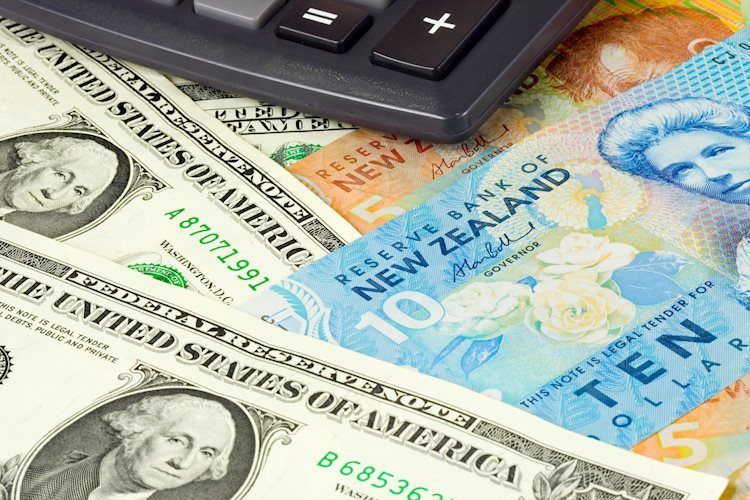Products You May Like
- NZD/USD rallied above 0.7200 again during Tuesday’s US session.
- It seemed as though the USD was hit by the cautious comments on QE tapering from Fed officials.
NZD/USD closed Tuesday trade with solid gains of more than 50 pips or about 0.7% amid a wave of US dollar weakness that saw the Dollar Index drop back to just above the 90.00 level. NZD/USD managed to rally back above the 0.7200 level and bulls will eye a new push back towards 0.7300.
Technical selling was one factor in the US dollar’s reversal back from Monday highs in the 90.70s on Tuesday, with DXY breaking below a short-term pennant structure identified in this article that was posted earlier in the day.
NZD/USD continues to trade as a function of global risk appetite and US dollar dynamics given a lack of any pertinent economic, central banking, or political events going on in New Zealand this week.
Analysts waver on bearish USD calls, just as USD weakness returns?
Much was made in the financial press on Tuesday about analysts wavering on their bearish USD calls for 2021; “having been vocal dollar bears last year we argue it is time for a consolidation in the dollar lower trend and would take profit on (negative dollar bets against the euro)… The Democratic win in Georgia will lead to huge upfront stimulus in coming months, just as the US economy reopens” the head of currency research at Deutsche Bank in London George Saravelos said on Tuesday.
Elsewhere, the global head of currency research at JPMorgan Paul Meggyesi said one key driver of dollar weakness was confidence that the Fed would allow inflation to overshoot its target but that investors are less confident; “we expect the market to reconsider the Fed’s enthusiasm for an inflation overshoot in the face of a potentially powerful post-vaccine bounce inactivity” said Meggyesi. Similarly, Markus Allenspach, head of fixed-income research at Julius Baer said that “higher growth translates into better employment, a return of inflationary forces and ultimately lower pressure on the Federal Reserve to keep refinancing rates artificially low”.
So pretty much, now that the Democrats have won control over Congress, signifying higher fiscal stimulus, US growth and then subsequently inflation ahead, these analysts fear that a less dovish US Federal Reserve will end up spurring USD upside.
While the prospect of a more hawkish than expected Fed does present massive upside risks to the US dollar, Fed officials were sounding anything but hawkish on Tuesday, a factor that likely helped contribute to DXY’s decline towards 90.00 into the US close. Fed members were generally keen to assure markets that the bank is not going to be tapering its asset purchase programme any time soon.
Meanwhile, other analysts and market commentators continue to point out that fiscal stimulus might not be a USD positive in that it is going to be financed by deficit spending. This in itself could be seen as a USD negative assuming the Fed continues to soak up all of this additional debt issuance via more QE and money printing, but is also likely to worsen the US’ already record large trade deficit that represents a real structural impediment to the US dollar (literally, billions more USD being sold by Americans to buy foreign goods each year that bought by foreigners to buy US goods).
Meanwhile, other analysts are sticking by their bearish USD 2021 calls give the outlook for global growth; analysts still widely expect factors such as mass vaccination programmes in key global markets, the ongoing tailwinds of unprecedented fiscal and monetary stimulus since the onset of the pandemic and improvements in global relations and trade conditions amid US foreign and trade policy normalisation under the incoming Biden administration to give global growth a massive boost from H2 2021.
Further fiscal stimulus in the US is likely to further boost the economies of those countries that rely heavily on exports to the US (much of Asia and Canada, for example). If the above pans out as hoped and expected, 2021 ought to be supportive for global equities, commodity prices and EM and risk-sensitive currencies, all at the expense of the safe-haven US dollar.
The significant number of market participants still subscribed to the USD bearish story likely saw Monday’s rally as an excellent opportunity to add to their USD short positions. Time will tell whose argument wins out.
NZD/USD key levels

